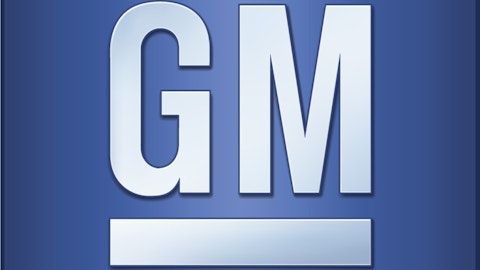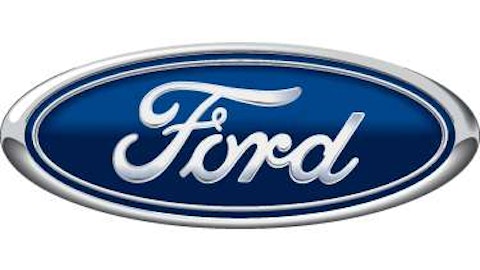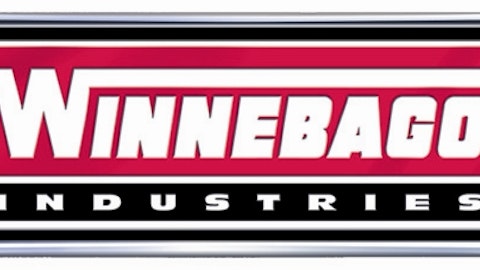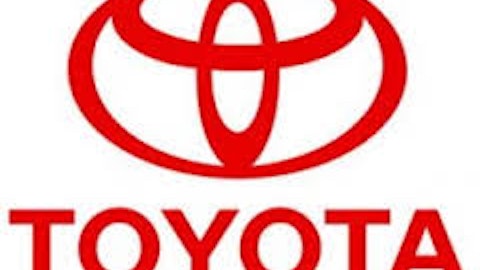When I think of a distinctly American vehicle, I usually don’t think of a Ford Motor Company (NYSE:F) Mustang or a Chevrolet Corvette from General Motors Company (NYSE:GM). I tend to think of RVs. Many other countries don’t have a market for RVs, due to the impracticality of owning one in an urban environment or the lack of RV campgrounds which offer water and electrical connections. By comparison, American roads offer incomparable freedom and a strong RV-centered infrastructure. Therefore, as U.S. auto sales have strengthened month after month, it doesn’t come as much of a surprise that RV sales have surged as well.
In April, RV manufacturers in the U.S., including Thor Industries, Inc. (NYSE:THO), Winnebago Industries, Inc. (NYSE:WGO), Forest River and Navistar International Corp (NYSE:NAV), shipped 32,100 RVs, a 19% increase from the previous year, according to a recent report from the Recreational Vehicle Industry Association (RVIA). At this rate, the RV industry could report its highest sales since 2007.
That’s an impressive comeback for an industry that most investors had left for dead, after total industry sales were slashed in half between 2007 and 2009. Although 9 million American households currently own RVs, the highest level ever recorded by the RVIA, sales could continue soaring as consumer confidence continues to rise. Favorable interest rates have also encouraged buyers to purchase more RVs, which generally sell for more than $70,000.
Thor soars once again
Back in 2009, the future looked bleak for Thor Industries, Inc. (NYSE:THO), the manufacturer of Four Winds, Airstream and Dutchman RVs. Mainstream automakers such as General Motors Company (NYSE:GM), Ford Motor Company (NYSE:F) and Chrysler were already having enough trouble selling regular cars to the public. With the economy crumbling rapidly, no one was looking to purchase a gas-guzzling RV. As a result, Thor’s stock dropped from $50 to $10 in two years. Yet despite that devastating plunge, Thor bounced back.
Today, Thor’s stock price has reclaimed the mid $40s, giving it a market cap of $2.4 billion. The company recently purchased a new factory in Wakarusa, Indiana to boost its output to meet market demand. Its workforce has increased 63% to 8,800 since 2009.
Thor’s recently reported third quarter earnings also confirmed this recovery. Its earnings rose 5.8% year-on-year to $0.83 per share, or $43.8 million. Adjusted earnings came in at $0.97 per share, topping the Thomson Reuters estimate by 8 cents. Revenue also rose 12% to $1.05 billion, in line with the consensus estimate.
By comparison, General Motors Company (NYSE:GM) reported a 14% decline in profit and a 2.4% slide in revenue last quarter. Ford Motor Company (NYSE:F) fared slightly better, posting a 6% and 10% decline in profit and revenue, respectively. Both automakers were dragged down by continued losses in Europe, which Thor is completely protected from.
Thor attributed its robust top and bottom-line growth to strong demand for its RVs. Total RV sales rose 15% to $929.8 million, and now account for 88.6% of its top line. Thor’s backlog of RVs rose 44.9% year-on-year. Sales of its higher-end RV coaches surprisingly outpaced sales of its lower-end towable motor homes. However, demand for both kinds of vehicles is expected to continue rising into the summer, when many Americans take long cross-country road trips.
Winnebago is winning
Winnebago Industries, Inc. (NYSE:WGO), considerably smaller than Thor with a market cap of $587 million, is best known for its iconic Winnebago RV, probably the most recognized RV brand in America. Although the company reports earnings at the end of this month, its stock also soared after Thor’s upbeat earnings.
Last quarter, Winnebago’s earnings rose an astounding 833% to $0.22 per share, topping the analyst consensus by 7 cents. Revenue rose 34.7% to $177.2 million, also ahead of analyst estimates. The company also noted that its order backlog had increased for five consecutive quarters, rising 174% year-on-year. Winnebago’s 17% sales growth in the United States and Canada also outpaced an industry-wide gain of 7% in North America.
Looking forward, Winnebago also sees the same positive catalysts as Thor Industries on the horizon. Winnebago CEO Randy Potts stated, “We believe the motorized RV market will continue to grow toward pre-recession levels. Improved economic indicators such as rising housing starts, lower unemployment and attractive interest rates should create a positive environment going forward.”
The Foolish fundamentals
Although the top and bottom-line growth of RV makers is certainly appealing, investors need to realize that RVs occupy a niche market that is highly vulnerable to any economic slowdown. Even if consumer confidence slips, unemployment rises and fuel costs rise, traditional automakers such as General Motors Company (NYSE:GM) and Ford Motor Company (NYSE:F) will still be able to sell vehicles. The same can’t be said about Thor Industries and Winnebago.
Despite strong past performance, we need to carefully compare the fundamentals of RV makers against General Motors Company (NYSE:GM) and Ford Motor Company (NYSE:F) to see if the risks are worth the reward.
| Forward P/E | Price to Sales (ttm) | Price to Book | Operating Margin | Profit Margin | Return on Equity (ttm) | |
| Thor Industries | 13.29 | 0.64 | 2.72 | 5.66% | 3.98% | 17.25% |
| Winnebago Industries | 17.18 | 0.82 | 3.68 | 4.20% | 8.49% | 44.02% |
| General Motors | 7.90 | 0.31 | 1.77 | 1.45% | 4.00% | 15.20% |
| Ford Motor Company | 9.30 | 0.44 | 3.45 | 4.83% | 4.27% | 33.97% |
| Advantage | General Motors | General Motors | General Motors | Thor Industries | Winnebago Industries | Winnebago Industries |
Source: Yahoo Finance, 6/7/2013
Although Thor and Winnebago have higher margins than General Motors or Ford, their fundamentals are not cheap. Based on current P/E, P/S and P/B valuations, General Motors has much more potential upside than either RV maker. Although Thor and Winnebago have had an excellent run over the past year, I believe that major institutional investors will dump them first if the market starts to slide, since RVs are still considered massive discretionary purchases and not essential ones.
The Foolish bottom line
In many ways, RVs are anachronistic vehicles. While Tesla Motors Inc (NASDAQ:TSLA), Toyota Motor Corporation (ADR) (NYSE:TM) and Nissan Motor Co., Ltd. (ADR) (PINK:NSANY) are making electric and hybrid vehicles look cool, massive RVs look like lumbering vehicles from another time. Even General Motors and Ford, which were severely punished during the recession for their over-dependence on large pickups and SUVs, have learned to create smaller, more fuel efficient vehicles.
Yet surprisingly, there is still a $14 billion market for RVs in the United States. This means that unlike General Motors and Ford, which both struggle overseas with European losses and a possible Chinese slowdown, both Thor and Winnebago are well insulated from these international challenges. However, I believe that both stocks are getting too expensive at current levels, although they could be nice rebound candidates in the event of a market crash.
Leo Sun owns shares of General Motors. The Motley Fool recommends Ford and General Motors. The Motley Fool owns shares of Ford and Winnebago Industries.
The article Investing in the Unlikely All-American Vehicle originally appeared on Fool.com and is written by Leo Sun.
Leo is a member of The Motley Fool Blog Network — entries represent the personal opinion of the blogger and are not formally edited.
Copyright © 1995 – 2013 The Motley Fool, LLC. All rights reserved. The Motley Fool has a disclosure policy.








